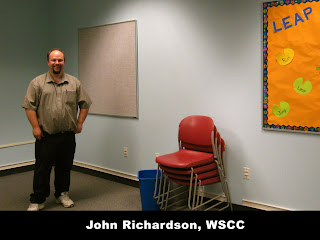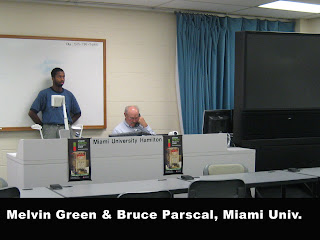Video Conference (VC) technology is getting better and IP based VC is improving since most sites follow the H.323 standard and have similar equipment. But the fact that there are still different types of audio and video equipment, varying broadband, echo cancellation devices, etc makes things a lot trickier. And in our case, the fact that more than 2 sites were involved over a bridge, made things a lot more complicated.
 I have stressed before of the need to test and maintain protocols on VCs. But in the case of important VCs, it may also be important to personally know the staff that drive these systems. Since this was a 3-week program, I had the chance to go and meet the tech people from the other 2 universities. At first I thought that this was unnecessary, but in hindsight that was one of the most important factors that helped to make this event work. Knowing the staff at the 2 sites personally, and how they interact with technology and people was directly responsible for increase in the response rate during tech issues. Knowing who to contact and what type of response – speed, method, language – was expected helped tremendously in a situation where the technology was complicated and needed a lot of attention.
I have stressed before of the need to test and maintain protocols on VCs. But in the case of important VCs, it may also be important to personally know the staff that drive these systems. Since this was a 3-week program, I had the chance to go and meet the tech people from the other 2 universities. At first I thought that this was unnecessary, but in hindsight that was one of the most important factors that helped to make this event work. Knowing the staff at the 2 sites personally, and how they interact with technology and people was directly responsible for increase in the response rate during tech issues. Knowing who to contact and what type of response – speed, method, language – was expected helped tremendously in a situation where the technology was complicated and needed a lot of attention. Moral of the story: Though VC technology has taken over some of the person to person contact, knowing your business partners personally alleviates some of the headaches that technology itself brings.
Moral of the story: Though VC technology has taken over some of the person to person contact, knowing your business partners personally alleviates some of the headaches that technology itself brings.Technologies: Videoconferencing, Polycom, H.323
Contact me:
Sujan Manandhar
Technology Integration Specialist,
Foreign Language Center
Ohio State University
Until the technology improves sigificantly, people are still the driving force for all communications - even videoconference. However, we can tell that the shift is on and videoconference has help reduce cost and time.
ReplyDeleteThe astronomical costs of large video conferencing system does not justify the talents that people provide. Some of these systems cost $50,000 or more, not to mention the cost/resource needed to maintain them.
ReplyDeleteGive me an old fashioned living breathing face any day.